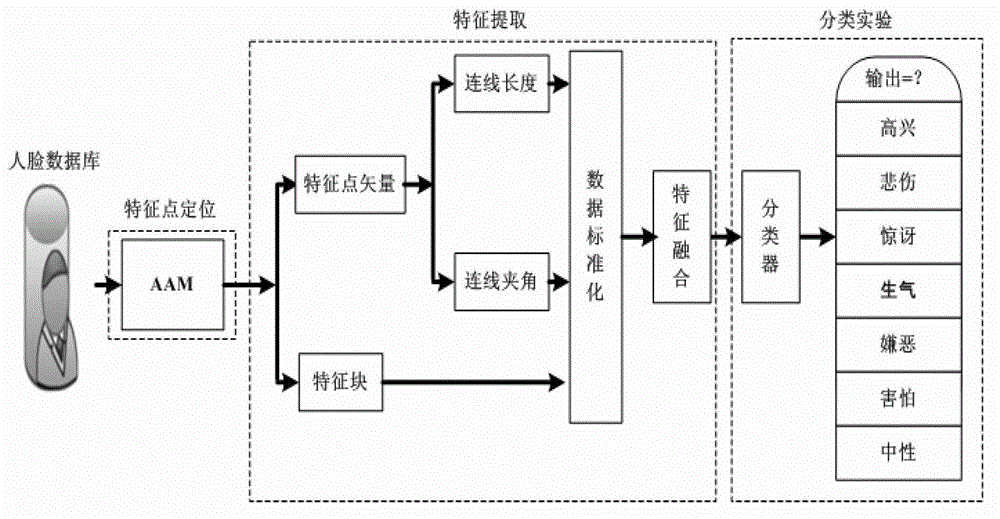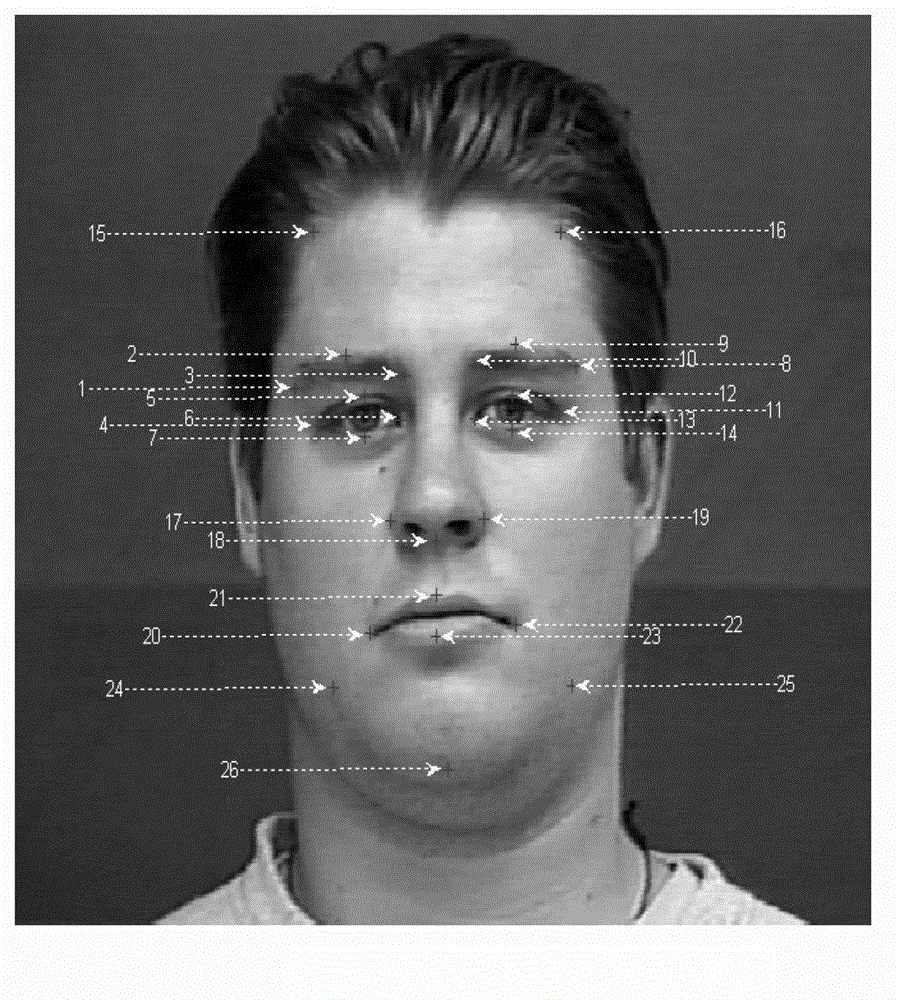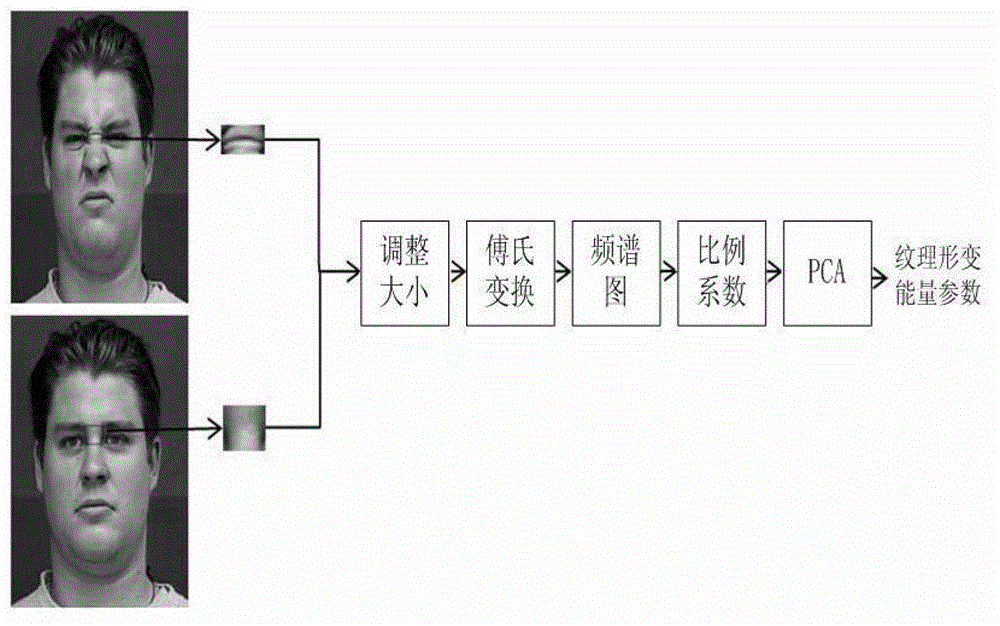Facial expression recognition method based on feature point vectors and texture deformation energy parameter
A technology of facial expression recognition and texture deformation, applied in the field of facial expression recognition, can solve problems that restrict the research and development of facial expression recognition
- Summary
- Abstract
- Description
- Claims
- Application Information
AI Technical Summary
Problems solved by technology
Method used
Image
Examples
Embodiment Construction
[0018] The basic idea of the present invention is to locate the feature points of the face through AAM, calculate and integrate the feature point vectors and texture deformation energy parameters according to the selected 26 feature points, and finally realize the facial expression (happy) through the RBF neural network , Sadness, Surprise, Angry, Disgust, Fear, Neutral) identification purposes.
[0019] According to the above thought, the system structure block diagram of the present invention is as figure 1 shown.
[0020] In order to make the object, technical solution and advantages of the present invention more clear, the implementation manners of the present invention will be described in detail below in conjunction with the accompanying drawings. It should be understood that the specific examples described here are only used to explain the present invention, not to limit the present invention.
[0021] 1. Before obtaining the feature point vector and feature block, ...
PUM
 Login to View More
Login to View More Abstract
Description
Claims
Application Information
 Login to View More
Login to View More - R&D
- Intellectual Property
- Life Sciences
- Materials
- Tech Scout
- Unparalleled Data Quality
- Higher Quality Content
- 60% Fewer Hallucinations
Browse by: Latest US Patents, China's latest patents, Technical Efficacy Thesaurus, Application Domain, Technology Topic, Popular Technical Reports.
© 2025 PatSnap. All rights reserved.Legal|Privacy policy|Modern Slavery Act Transparency Statement|Sitemap|About US| Contact US: help@patsnap.com



